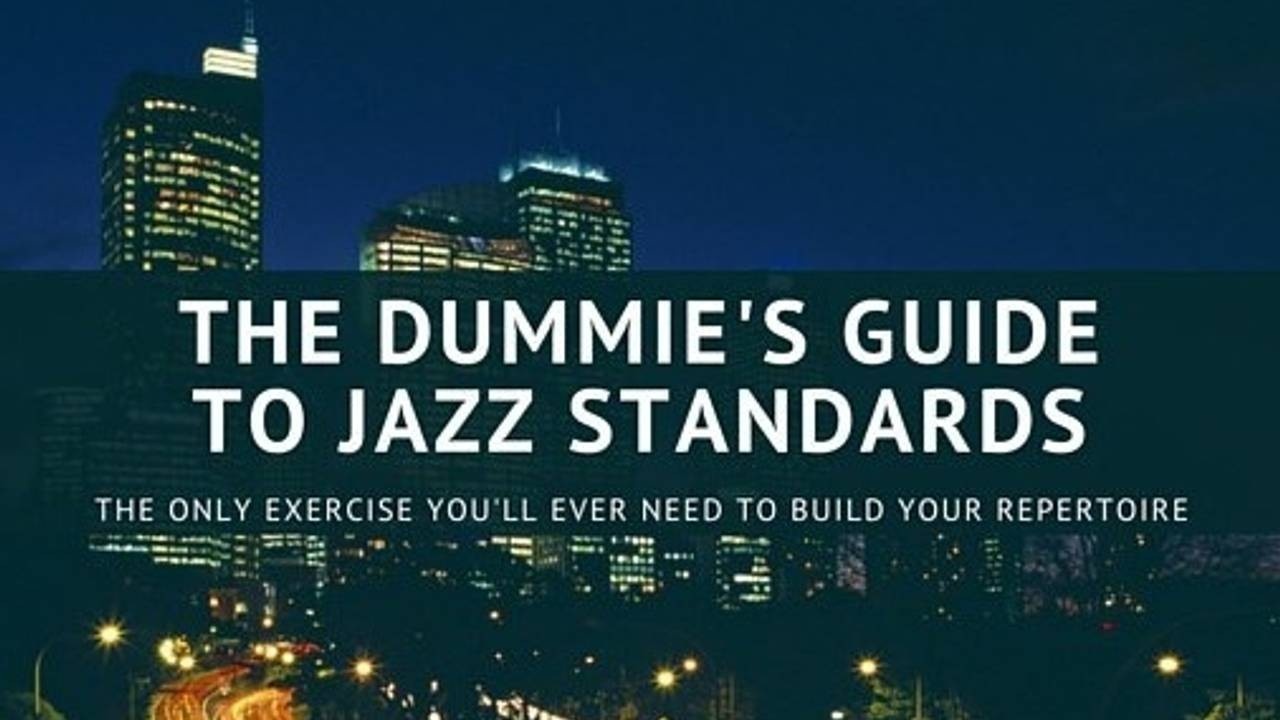
The Dummies' Guide to Jazz Standards - for Jazz Guitarists
Aug 22, 2015The year is 2005. I'm warming up on a few jazz standards on my (then new) blue Godin Flat-Five X. The almost sound-proof cubicle is cozy, but wide enough to fit a piano and one all-purpose amp. The air is old and stinky from being recycled by the ventilation system. And I'm thinking to myself,
Oh, quite the honor. I have my own private ON/OFF switch for the fan. The label should have been "Suffocate" and "Suffocate Less". Or even "Some Oxygen" and "Less Oxygen".
So, I stand up and crack open a window to get a taste of that September morning air. Back to playing some jazz standards (probably "How High the Moon" and "All the Things You Are").
The student mocking the vent and warming up on tunes is me. The basement of the University's music department is crowded, noisy, old and it smells. And quite frankly, that place probably has mold in some corners; the humidity in the air makes everything feel like the unfinished basement at your uncle's cabin. But with 4-5 horns practicing scales in the background. You get the picture?
In this very context, a younger version of Marc-Andre Seguin is awaiting the great jazz guitarist and educator, Michael Berard. Can't wait. This is the first of several private guitar lessons I'll be attending, and those will specifically be focused on jazz. For the first time of my still short life: I'm taking actual jazz guitar lessons. I'm thrilled!
The Thrill is Gone
Skip forward 90 minutes, the long-awaited private lecture was over, and so was the pre-lesson buzz. I had so many expectations, I guess it's normal that my "mental jazz bubble" deflated at some point! Not that the lesson in itself went wrong. And it wasn't a deception to me or the instructor, either.
So, What Happened?
Being in the modern era and all, I expected Michael to overwhelm me and dump all his musical knowledge on my lap: technical ideas, scales, licks, chords, substitutions and modern "concepts" used by the best jazz players. Perhaps, I also expected him to tell me (and show me) how musically ignorant I was ... maybe I needed to hear "Kid, you don't know your scales".
Yet all he told me in an hour-long lesson is to play more on jazz standards. Way more. Here's a quick summary of the lesson:
- Let's play a song.
I remember it was "How High the Moon".
- After a 10-minute jazz jam, the instructor went: "Ok, you kinda know your scales and arps."
My jaw dropped on my lap.
- The instructor then went: "Dude, you just gotta play on more songs. Build a list." [I'm paraphrasing]
So, my jaw dropped on the floor!
The Jazz Standards Cure: Fifty Percent
Now let me turn over to you, dear readers. I'm assuming that if you are reading these lines, you are seeking to grow your jazz guitar abilities. Much like "young me" was trying all he could to become a master jazz guitarist.
And I can help you. Here's the short advice:
- Stop investing so much time practicing scales, chords and other stuff
- Invest at least 50% of your practice time playing jazz standards.
You can stop reading right now and go back to the practice room. Go in peace and shed. Or, you can continue further down this post and try to apply the 4 steps Michael Berard gave me during that first lesson to practice on jazz guitar standards.
And the Secret Recipe, Colonel?
Of course, Michael Berard did not let me go with the words "play more tunes, I'll see you next week".
He gave me further tips and tricks to learn, memorize and practice by using standard tunes' melodies, chord progressions and forms.
Michael is very fond of going chorus-by-chorus to verify your knowledge of the jazz standard you're currently working on. It also helps identifying trouble spots and polish certain weaker area. In my own teachings since 2009, I personally call this "the 4-chorus exercise".
I've summarized his teaching (and my findings) in a convenient PDF. Print this one and put it where you can see it in your practice room. I like to call it "The Dummies' Guide to Jazz Standards".
Dummies' Guide to Jazz Standards PDF
Join our Community here.
The Dummies' Guide to Jazz Standards: 4 steps
Here's the simple statement of the concept: take a standard, pick a tempo, hide the lead sheet. Play the melody, the chords and an improvised solo and the melody again. That is one chorus each, in solid time Don't stop! Optionally, if you have a chord melody, play it instead of either statements of the melody. That's it! Download the PDF above for an explanation of each step in greater detail.









